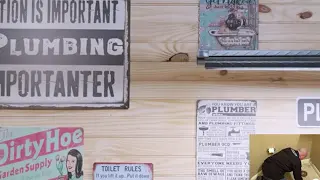Emergencies happen when you least expect them, and plumbing issues can quickly turn a comfortable home into a stressful environment. Whether you’re dealing with a broken toilet or need a temporary solution during a remodel, knowing how to install a toilet efficiently can save you time, money, and a lot of hassle. In this guide, we’ll walk you through the quick and easy toilet installation process, ensuring you’re prepared for any plumbing emergency.
Why Install an Emergency Toilet?
Installing an emergency toilet is a practical solution for various situations, such as:
- Bathroom Remodeling: Removing an old toilet to remodel the bathroom and needing a temporary setup.
- Plumbing Failures: Dealing with unexpected toilet malfunctions or leaks.
- Guest Accommodations: Providing a functional bathroom when the primary one is under repair.
Having the knowledge to install a toilet quickly ensures that you maintain functionality and comfort in your home during unforeseen circumstances.
Tools and Materials You’ll Need
Before you begin, gather the necessary tools and materials to ensure a smooth installation process:
- Toilet Installation Kit: Includes wax ring, bolts, and seat.
- Adjustable Wrench: For tightening nuts and bolts.
- Screwdriver: To remove and attach fixtures.
- Putty Knife: For removing old wax and debris.
- Bucket and Rags: For cleaning up any spills.
- Replacement Water Supply Line: If needed.
- Plastic Bolt Holders: To secure the toilet in place temporarily.
- Level: To ensure the toilet sits evenly.
Step-by-Step Toilet Installation Process
1. Prepare the Area
Turn Off the Water Supply: Locate the shut-off valve behind the toilet and turn it off to prevent water flow.
Drain the Toilet: Flush the toilet to drain as much water as possible from the tank and bowl. Use a sponge or towel to soak up any remaining water.
Remove the Old Toilet: Disconnect the water supply line from the tank. Unscrew the bolts securing the toilet to the floor and gently rock the toilet to break the seal. Lift the old toilet and set it aside.
2. Inspect the Flange
Check the Flange Condition: The flange is the pipe fitting that connects the toilet to the drain. Ensure it’s in good condition. If it’s damaged or corroded, it may need to be repaired or replaced before proceeding.
Clean the Flange: Remove any old wax residue or debris from the flange using a putty knife. A clean flange ensures a proper seal for the new toilet.
3. Install the Wax Ring
Position the Wax Ring: Place the wax ring onto the flange. Some prefer to place it on the bottom of the toilet’s horn before positioning the toilet over the flange. Ensure it’s centered to avoid leaks.
4. Set the Toilet in Place
Align the Toilet: Carefully lift the new toilet and align the bolts with the holes in the base. Lower the toilet onto the flange, ensuring the bolts pass through the holes.
Secure the Toilet: Press down firmly to compress the wax ring and create a seal. Use plastic bolt holders to keep the toilet in place temporarily.
5. Tighten the Bolts
Attach Nuts to Bolts: Place washers and nuts onto the bolts. Tighten them alternately to ensure the toilet is securely fastened to the floor without cracking the porcelain.
Check for Stability: Ensure the toilet sits level and doesn’t wobble. Use a level to confirm it’s even.
6. Connect the Water Supply
Attach the Water Line: Connect the replacement water supply line to the tank. Tighten it with an adjustable wrench, but avoid over-tightening to prevent damage.
Turn On the Water Supply: Slowly turn the shut-off valve back on and allow the tank to fill. Check for any leaks around the base and connections.
7. Finalize the Installation
Install the Toilet Seat: Attach the toilet seat according to the manufacturer’s instructions.
Clean Up: Remove any excess wax from the base of the toilet and clean the surrounding area.
Test the Toilet: Flush the toilet several times to ensure it’s functioning correctly and there are no leaks.
Tips for a Successful Installation
- Use Quality Materials: Invest in a good quality wax ring and installation kit to ensure a durable seal.
- Avoid Over-Tightening: Tighten bolts just enough to secure the toilet without cracking the porcelain.
- Ensure Proper Alignment: Proper alignment prevents leaks and ensures the toilet functions efficiently.
- Check for Level: A level toilet prevents rocking and reduces the risk of leaks.
Common Mistakes to Avoid
- Skipping the Wax Ring: The wax ring is crucial for sealing the toilet to the flange. Skipping it can lead to leaks and odors.
- Over-Tightening Bolts: This can crack the toilet base and cause installation issues.
- Ignoring Flange Damage: A damaged flange can compromise the entire installation, leading to leaks and potential structural damage.
- Not Testing for Leaks: Always test the installation by flushing the toilet multiple times to ensure there are no leaks.
Conclusion
Installing an emergency toilet doesn’t have to be a daunting task. With the right tools, materials, and a clear understanding of the steps involved, you can successfully set up a toilet quickly and efficiently. Whether you’re dealing with a sudden plumbing issue or preparing for a bathroom remodel, this guide provides the knowledge you need to handle the situation with confidence.
Ready to Tackle Your Next Plumbing Project?
For more plumbing tips, tools, and professional guidance, visit LeakProo.com. Whether you’re a DIY enthusiast or a professional plumber, our resources will help you excel in all your plumbing endeavors. Equip yourself with the skills and knowledge needed to keep your home’s plumbing system running smoothly.




